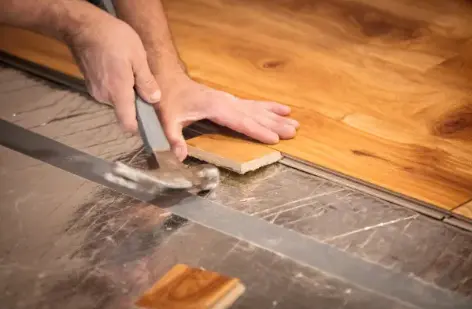Repairing & Refreshing Sports Flooring: Tips to Extend the Lifespan and Maintain Performance
Sports flooring is designed to endure the intense physical activity it faces daily, from basketball courts to gyms and fitness centers. However, over time, even the most durable floors can suffer from wear and tear, such as scratches, cracks, or surface damage. Proper maintenance and timely repairs are essential to preserving the floor’s performance and aesthetic appeal. In this guide, we’ll explore the most common types of damage to sports flooring and the best methods for repair and resurfacing, ensuring that your floor remains in top condition for years to come.

Common Types of Damage to Sports Flooring
- Scratches: Whether caused by heavy foot traffic, furniture, or sports equipment, scratches are a common issue on sports floors. These unsightly blemishes can disrupt the surface’s smooth texture and aesthetic.
- Cracks: Cracks can form from various factors, including impacts, shifts in the building’s foundation, or extreme temperature fluctuations. Cracks can compromise the structural integrity of the floor and lead to further damage if left untreated.
- Dents and Dings: Though less noticeable than scratches or cracks, dents and dings can occur from dropped equipment or high-impact activity. They can lead to uneven surfaces and discomfort for athletes.
- Discoloration: The finish of sports flooring can fade over time due to UV exposure, heavy use, or improper cleaning techniques. This discoloration can affect the floor’s appearance and performance, especially in courts requiring precise markings.
Effective Repair Techniques for Sports Flooring
- Scratch Repair: For minor scratches, you can use a commercial-grade floor scratch remover designed specifically for sports floors. These products fill in the scratches and restore the surface’s smoothness. For deeper scratches, the area can be lightly sanded and refinished with a matching floor finish to restore uniformity.
- Crack Repair: Small cracks can be repaired with a two-part epoxy filler or polyurethane sealant. Apply the filler to the crack, smoothing it with a putty knife, and allow it to cure properly. For larger cracks or significant damage, the affected area may need to be resurfaced with a new layer of material to maintain structural integrity.
- Dents and Dings: To repair dents, the best method is to heat the affected area using a heat gun and gently press the dent out. This process should be followed by refinishing to restore the floor's smooth texture and appearance.
- Refinishing and Re-coating: To address discoloration or worn-out finishes, a complete refinishing is recommended. This involves sanding the surface to remove the old finish, followed by the application of a new coat of high-quality, non-toxic finish that will enhance durability and prevent further wear.
Routine Maintenance and Surface Treatments
To prevent future damage, it’s important to maintain a regular cleaning and maintenance schedule. Sweep or vacuum the floor daily to remove debris that could cause scratching, and mop the surface with a pH-neutral cleaner. Additionally, applying a protective surface treatment, like a UV-resistant coating, can help reduce discoloration from sunlight and keep the floor looking vibrant.
Sports flooring represents a significant investment in your facility’s performance and safety. Regular maintenance and timely repairs will help extend the lifespan of your floor and ensure that it continues to support athletic performance. By following the right repair techniques and committing to routine upkeep, you can keep your sports floor in top shape, creating a safe and durable surface for athletes and sports enthusiasts alike.